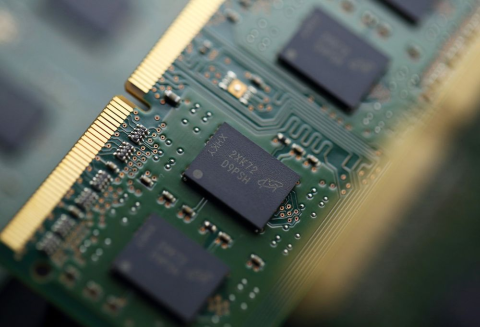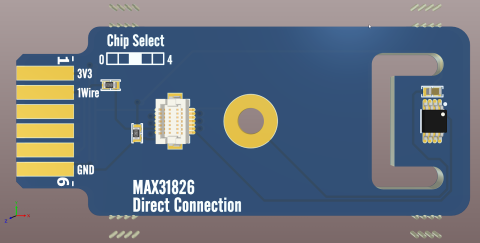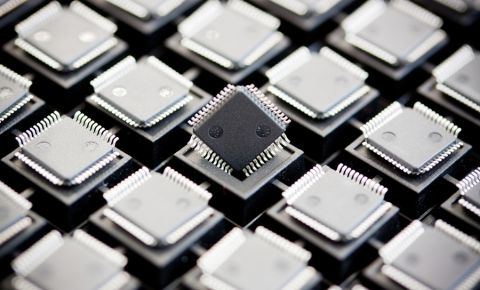PCB Design Guide to Controlled Impedance During PCB Routing
Table of Contents
In June 1831, Sir James Clark Ross discovered the North Magnetic Pole on the Boothia Peninsula in Northern Canada. While the term “discovery” seems to indicate that the North Magnetic Pole is static, the North and South Magnetic Poles, in fact, move continuously. The Earth’s magnetic field changes over time and as those changes occur, the positions of the poles also shift. Given the rate of movement at 55 km per year, we may have another meaning for “polar express.”
When working through the travel of signals in your PCB, though, you might not have the time, money, or energy to worry through the investment of traveling from one polar tip to the other. Trace routing and trace width are important to keep in mind; however, the traces on your circuit board’s ground plane can make keeping track of differential impedance difficult. Learning more about how to make the most of your PCB design software for traces and controlled impedance routing can help.
Exploring Complex Impedance
In terms of impedance, the concept of “polar” involves a different type of exploration. Complex impedance is an important tool for working with multi-component AC circuits. Instead of using sines and cosines to represent voltages and currents in those circuits, we can express impedance as a complex exponential or . Impedance works as the voltage/current ratio for a single complex exponential at a particular frequency.
From there, we can express the impedance of individual circuit elements as pure or real imaginary numbers. With this, the purely imaginary reactive impedance of an ideal inductor is:
Meanwhile, the purely imaginary reactive impedance of an ideal capacitor appears as:
Moving to pure or imaginary numbers requires using a complex plane with resistance along the real axis. Here, the reactance values of the capacitor and an inductor become imaginary numbers. The imaginary impedance provides the reactive component of the impedance and allows us to evaluate changes in phase that occur due to the reactance.
With series combinations of RL and RC components, we can add the component values as components of a vector. As complex numbers, those values have the same units as resistance.
Polar Form of Complex Impedance
The polar form of complex expressions for RL and RC circuits appears as a two-dimensional coordinate system that illustrates the relationship between the amplitude and phase of the voltage and current. Each point on a plane is a given distance from a reference point and a given angle from a reference direction. The reference point functions as the pole, while the ray from the pole in the reference direction refers to the polar axis. The distance from the pole equals the radial coordinate or radius, while the angle represents the polar angle.
In the polar form, the magnitude of the complex impedance equals the ratio of voltage amplitude to the current amplitude. The phase of the complex impedance equals the phase shift of the current ahead of the voltage. In equation form, impedance appears as:
The magnitude represents the ratio of the voltage difference amplitude to the current amplitude. The argument Ɵ gives the phase difference between the voltage and current, while
represents the imaginary unit. Using the polar form for complex impedance simplifies multiplication and division of impedance quantities.
Being able to plan your traces for controlled impedance PCB routing is necessary
PCB Impedance Control
Our very brief discussion of complex impedance and the polar form of complex impedance underlines both the mathematical complexity involved with calculating impedance and tough problems that we encounter with impedance control in PCB design. With multi-layer high-frequency circuits consisting of numerous vias and branches acting as transmission lines, the problem becomes even tougher due to the potential for energy reflection between the source and the load. No matter the type or complexity of the circuit, maximum signal transfer only occurs if all impedances along the signal path match.
Using best design practice in your circuit board can make it so that your traces are routed properly and impedance can be matched properly. To match the output impedance of the source, the trace impedance, and the input impedance of the load:
- Match component impedance
- Measure trace characteristics such as length, width, and thickness
- Use microstrips to achieve the desired impedance
Controlled Impedance Routing and Altium Designer®
Altium Designer allows you to analyze the signal integrity of your PCB design at the schematic capture stage. You can also define the supply nets and use the Tools menu to provide average track impedances and route lengths. Altium Designer offers a straightforward solution for impedance matching the components within your design. You can also analyze the reflection on selected nets and experiment with different terminator values.
To determine the routing impedance, you can use one of two formulas found in Altium Designer. The first allows you to determine the characteristic impedance of a microstrip, while the second provides the characteristic impedance formula for a stripline. Both equations show the dielectric thicknesses, the routing width, and the dielectric constant of the dielectric material.
Trust your PCB design software to help map your traces efficiently and effectively
Altium Designer further simplifies this task with its Characteristic Impedance Width option. With this option, you can establish the Routing Width Design rule within the PCB Rules and Constraint Editor and then enter your required impedances. The Characteristics Impedance Width option automatically translates the required impedances into widths for each signal layer. Interactively controlled, Altium Designer’s impedance routing feature automatically adjusts the track width for the required impedance.
To learn more about controlled impedance routing and component impedance matching for your high-speed PCB design, talk to an expert at Altium Designer.


















